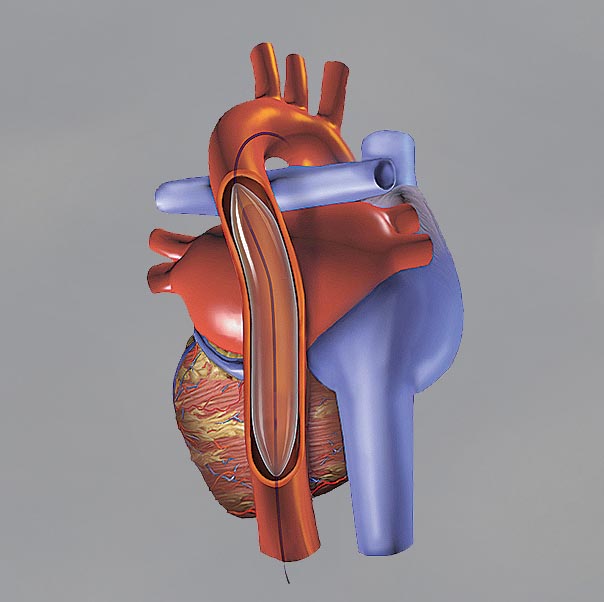Intraaortic Balloon Pump (IABP)
 Intraaortic balloon pump, commonly called IABP, is a catheter-based procedure reserved for patients with severe heart disease such as heart attack or congestive heart failure, or who are waiting for a heart transplant. The procedure’s goal is to increase blood flow to the heart and body, and to decrease the heart’s workload.
Intraaortic balloon pump, commonly called IABP, is a catheter-based procedure reserved for patients with severe heart disease such as heart attack or congestive heart failure, or who are waiting for a heart transplant. The procedure’s goal is to increase blood flow to the heart and body, and to decrease the heart’s workload.
How does IABP work?
A catheter with an intraaortic balloon attached is inserted into an artery, usually in the groin (the femoral artery) and then advanced into the largest artery in your body, the aorta. Next, the catheter is connected to a computer that will control the inflation/deflation, timing and pressure, so that the balloon will inflate when the heart muscle relaxes and deflate just before the heart pumps again. This process is called “counterpulsation.”
The pump at your bedside inflates the balloon in your aorta when the heart is relaxed, allowing the heart to receive more oxygen-rich blood without working so hard. Then, just before your heart gets ready to pump this oxygenated blood, the pump deflates the balloon. This creates a drop in pressure within your aorta, helping your heart pump the blood more easily throughout your body.
Once your heart stabilizes and can function properly on its own, the IABP and catheter are removed, and pressure is applied to stop bleeding.
What does IABP treat?
IABP is typically used:
- During severe angina episodes
- Before, during, or after open-heart surgery (in certain patients only)
- Before, during, or after balloon angioplasty (in certain patients only)
- During emergency situations, including heart attack and congestive heart failure
- During the waiting period for a donor heart for heart transplantation
